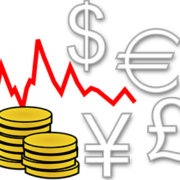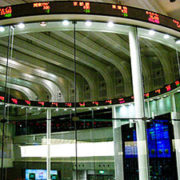Archive | September, 2016
Information and Communications Technology
 Energy
Energy
 Economics
Economics
 Economics
Economics

Going digital in the Pacific: lessons from Samoa’s online firms

More than ever before, Pacific firms are moving online. Will this increase e-commerce? This online activity is particularly good news in 2016, as the Pacific has witnessed an 8.2% jump in tourism arrivals. According to Pacific niche exporters, tourists constitute the majority of their overseas customers, often by visiting the seller’s website after they return home to seek out more information or re-order souvenirs.
Belling the cat: financing solar renewable energy projects

World energy demand is forecasted to grow by nearly one-third between 2015 and 2040. A large share of this increase will be from the power sector, and the global demand for electricity is likely to increase by more than 70%, leading to a 16% increase in energy-related carbon dioxide (CO2) emissions by 2040. Despite the diplomatic success of the Conference of the Parties (COP) 21, it is clear that the current pledges by various countries in the form of Nationally Determined Contributions fall way short of the “well below 2-degrees Celsius” goal agreed to by world leaders in Paris.
Implications of negative interest rates for Asia

The ultra-low and negative interest rate environment in advanced economies and its implications for the rest of the world are currently among the top concerns of financial market participants and policy makers worldwide. Mark Carney, the governor of the Bank of England, recently said the low interest rate equilibrium is one of the challenges that the global economy risks becoming trapped in. The phenomenon started when the central banks of the eurozone, Switzerland, Sweden, and Denmark adopted negative interest rates from mid-2014 to early 2015. Japan followed in January 2016 and Hungary was the first emerging market to introduce negative rates in March 2016.
Spillover effects of Japan’s unconventional monetary policy on emerging Asia

Like other central banks in advanced countries, the Bank of Japan (BOJ) adopted an unconventional monetary policy after the 2007–2009 global financial crisis (GFC). After Prime Minister Abe advocated the new policy regime, Abenomics, the BOJ became highly aggressive in its unconventional policy (see, for example, Fukuda [2015] for details). On 4 April 2013, BOJ Governor Kuroda introduced quantitative and qualitative monetary easing (QQE) and committed to achieve a 2% inflation target in 2 years.


Search
Subscribe / Connect to Asia Pathways
Subjects
- Agriculture and natural resources
- Blog
- Capacity development
- Climate change
- Economics
- Education
- Energy
- Environment
- Finance sector development
- Gender
- Governance and public sector management
- Health
- Industry and trade
- Information and Communications Technology
- Infrastructure
- Miscellaneous
- Population
- Poverty
- Private sector development
- Regional cooperation and integration
- Sanitation
- Social development and protection
- Transport
- Uncategorized
- Urban development
- Video Blog
- Water
Recent Posts
- Artificial intelligence: A new driver for inclusive growth and development?
- Increasing trust in cross-border e-commerce and artificial intelligence
- Enhancing access to maternal and newborn healthcare in developing Asia
- Can electric vehicles lead the way to a sustainable future?
- Mitigating climate-related sovereign risk to accelerate action on the climate emergency




Recent Comments